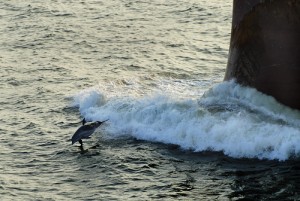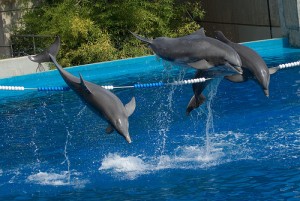Introduction


Dolphins are charismatic marine mammals that have a special place in the minds of many people. These playful aquatic acrobats are often spotted swimming beside boats or near resort destinations, but often the closest experience a person has had with a dolphin has taken place within a zoo or aquarium. Many of the majoraquarium facilities around the world keep captive dolphins and other
cetaceans (whales, dolphins and porpoises) as part of the entertainment part of their facilities. It is difficult to get accurate estimates of numbers of dolphins in captivity as some facilities do not release the numbers of animals in their facilities, but the International Marine Animals Defense Association (IMADA) estimates that there are 2,100 dolphins held captive in 59 countries around the world (IMADA, 2011). Dolphins are kept in aquariums, dolphinariums, zoos, entertainment and theme parks, and hotels. The most commonly kept dolphin species is the bottlenose dolphin (Tursiops truncatus), although other species including the Common Dolphin, Spotted Dolphin, and Pacific White-Sided Dolphin are also kept. The Killer Whale, Orcinus orca, is also kept in captivity, but in much lower numbers than dolphins, with an estimated 42 held worldwide (IMADA, 2011). In Canada, the main facilities that keep cetaceans are Marineland Ontario and the Vancouver Aquarium. The Vancouver Aquarium is currently home to 2 Pacific White-Sided Dolphins and 2 harbour porpoises.
Dolphins that are held in captivity typically come from 3 types of sources. Some dolphins are wild-caught, taken from the ocean with the intention of placing them in a facility. Others are captive bred, born into captivity from breeding programs in facilities. The remainders are rescued animals that have been rehabilitated after suffering injuries as a result of being caught in fishing nets or being stranded on beaches. Often these animals end up living in aquariums after government bodies determine they are “non-releasable” due to permanent injuries and/or dependence on humans. The 2 dolphins and 2 porpoises at the Vancouver Aquarium fall into this rescued and non-releasable category.